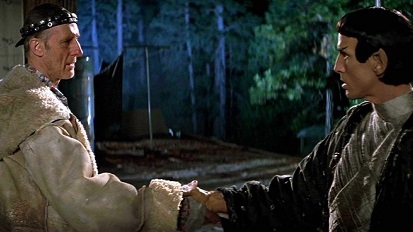
Word of the Day: Phoenix
Paul Schleifer
The word phoenix comes into English during the Old English period, from Medieval Latin phenix, which came from the Greek phoenix. It is unclear exactly which Greek meaning of the word came first: it refers to the date tree and fruit, and also to the color purple-red, and also to a mythical bird from Arabia which flies to Egypt every 500 years in order to die and be reborn. The original spelling in Old English was fenix, but the English spelling was revised to reflect the Greek origin in the 16th century.
So the word has narrower and broader meanings in English. It can still refer to the bird, like Dumbledore’s Fawkes in the Harry Potter series. But in a broader sense it can mean “a person or thing of peerless beauty or excellence” or “a person or thing that has become renewed or restored after suffering calamity or apparent annihilation” (http://www.dictionary.com/browse/phoenix?s=t). An example of that last definition would be the city of Atlanta, GA, which was burned to the ground by General Sherman’s army in September of 1864, rose from its ashes to become perhaps the most important city in the Southeast; there is a famous statue in Atlanta called Atlanta from the Ashes, or Phoenix Rising. The seal of the City of Atlanta has on it a phoenix with the motto “Resurgens,” meaning “again.”
April 5 is First Contact Day, a somewhat minor festival in the calendar of recognized holidays. Why, you might ask, is today First Contact Day?
On this date just 45 years from now, the human race made its first contact with beings from another planet, specifically, from Vulcan.
We had just developed warp drive, the kind of drive that would allow us to travel outside of the solar system. More primitive drives were not effective for galaxy-wide travel because they were just too slow, limited as they were by the speed of light (299,792,458 meters per second (approximately 3.00×108 m/s, or 300,000 km/s [186,000 mi/s]; pretty slow, right?). But it was not in the far reaches of space where this first contact happened. It happened in Bozeman, Montana.
The Vulcans noticed the warp signature of our first use of the warp drive, and followed it to Earth, where the Vulcan ship T’Plana-Hath landed; this was the launch and landing point for the ship, piloted by Dr. Zefram Cochrane, the inventor of the warp drive. It was this first contact that led to the alliance of humans and Vulcans, and finally to the establishment of the United Federation of Planets.
Cochrane was an interesting fellow. His pursuit of warp drive was not because of some desire to better the lot of humankind; he did it for financial gain. He launched his first warp-capable ship from the unused silo that had once contained a Titan II ICBM. His first flight is launched to the sounds of Steppenwolf’s “Magic Carpet Ride,” which he probably thought somehow appropriate, though at that point the song was nearly 100 years old and only a handful of retros would have understood where it came from.
Cochrane was present at the dedication of the Warp Five Complex, a research facility designed to aid in the improvement of Cochrane’s warp drive to the point where humans could travel at speeds up to warp 5. At this dedication, Cochrane was quoted as saying, “On this site, a powerful engine will be built. An engine that will someday help us to travel a hundred times faster than we can today. Imagine it – thousands of inhabited planets at our fingertips… and we’ll be able to explore those strange new worlds, and seek out new life and new civilizations. This engine will let us go boldly… where no man has gone before.” One wonders what kind of man would, in 2119, use such sexist language, but I guess that might be explained by his fascination with archaic music, like that from the 1960s.
Cochrane is also noted for having said, “Don’t try to be a great man, just be a man. And let history make its own judgments.” I think history’s judgment on Cochrane is, well, to be determined.
The way this little history connects with our word of the day is that Cochrane named his ship The Phoenix. I am not sure whether it has anything to do with the actual word phoenix or not, but it is an intriguing question.
Happy First Contact Day.
The image is taken from a website, http://www.denofgeek.com/us/movies/star-trek/254280/star-trek-first-contact-8-amazing-things-about-the-best-next-generation-movie, and I’m not sure that it’s not a copyright violation, but at least I’m not making any money off it. It is, obviously, a picture of the first contact between Zefram Cochrane and a representative of the planet Vulcan in Boseman, Montana.